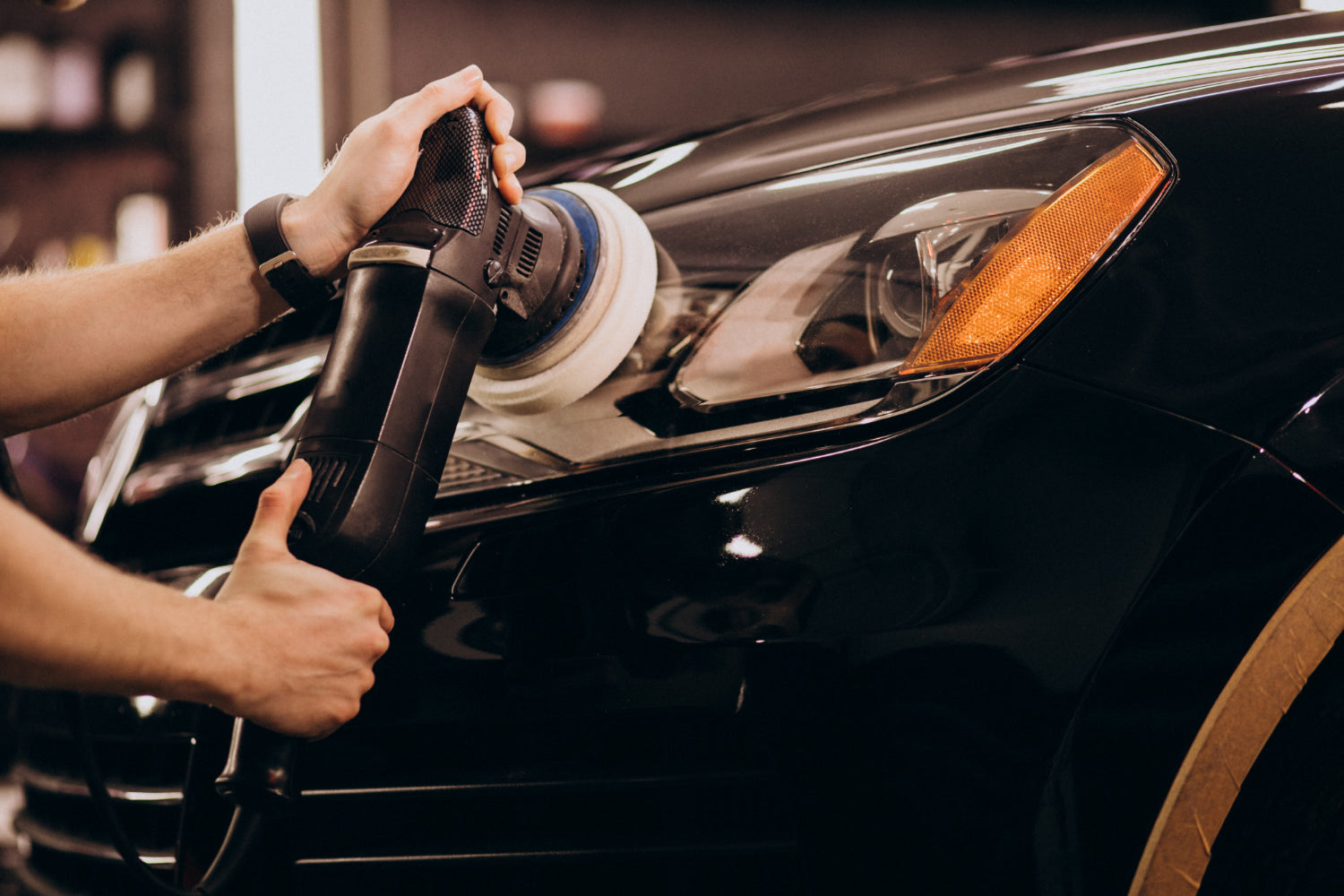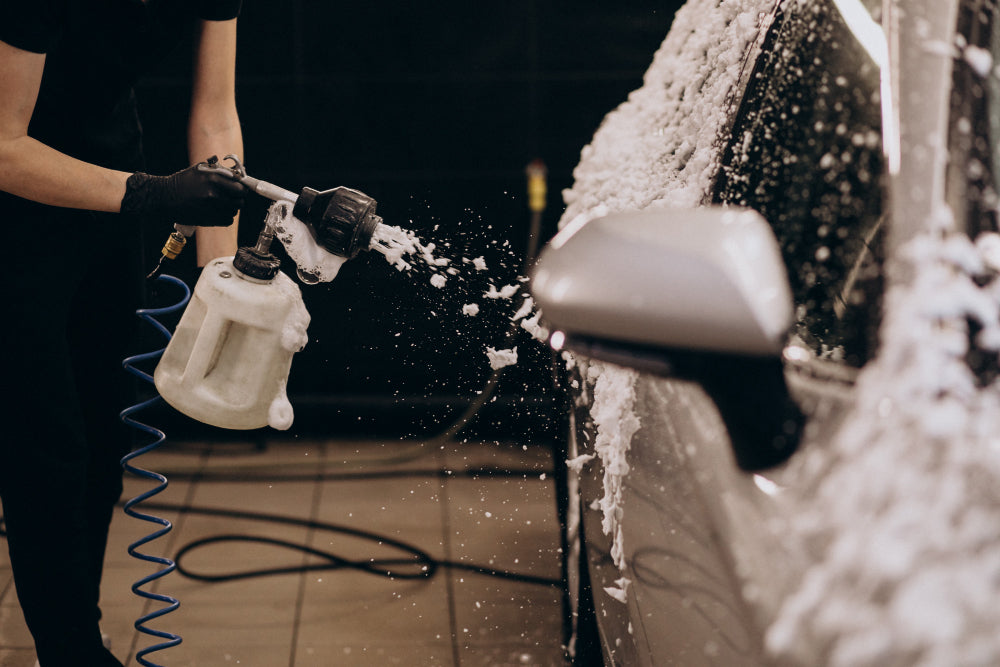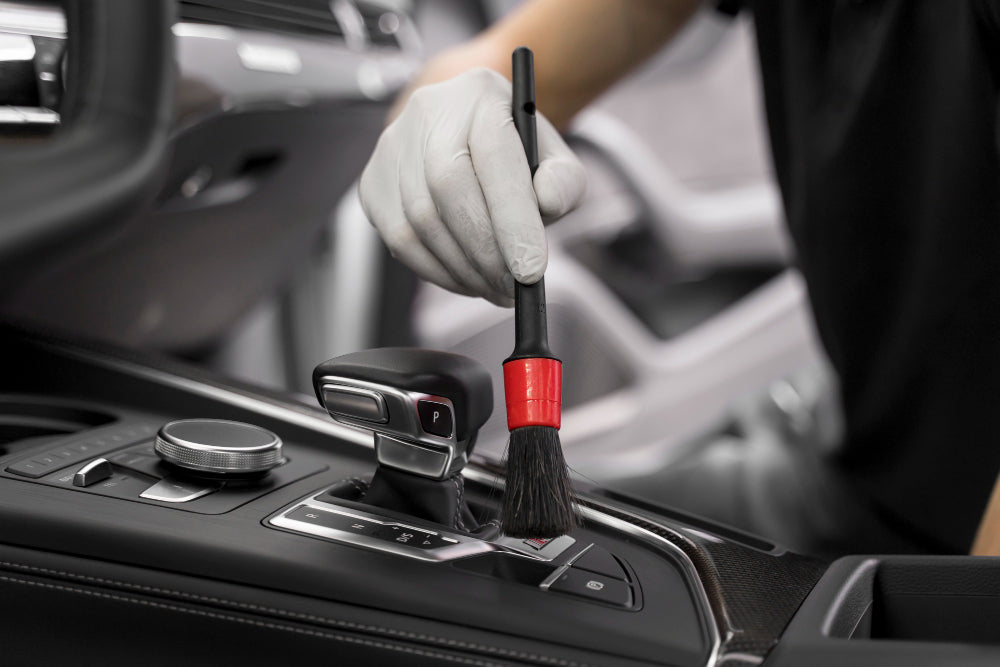Waxing:
There are different types of wax with varied functions, allowing car owners to choose according to their needs. Options include repairing waxes, enhancing waxes, acid rain-resistant waxes, and anti-static waxes, among others. When waxing, follow a specific sequence, handle small areas, apply even pressure, and maintain consistency in the waxing direction. After forming a wax film on the paint surface, wait for a few minutes until the wax feels dry to the touch, then manually remove it. Generally, waxing every two months or monthly is recommended, adjusting based on weather conditions. Be cautious when choosing wax, avoiding low-quality coarse waxes that can damage the car, as they often contain abrasive particles.
Glazing:
Glazing involves using a specialized machine to press a protective agent into the car paint, forming a network-like protective layer inside, making the car surface resemble that of ceramics. The major advantage of glazing is likened to putting a transparent coat on the car, providing protection against UV radiation, acid rain erosion, wind-blown sand, oxidation-induced fading, and even minor scratches. Glazing reduces the frequency of car washing, but it's not a one-time solution. It generally requires annual treatment, and for older cars, pre-treatment to remove oxidation may be necessary. Beauty shops often use enhancers to restore faded paint before glazing.
Coating:
Coating involves applying a layer of wax protection to the car surface. Using a coating machine, liquid wax with negative ions is evenly sprayed onto the car paint. Due to the static electricity in the liquid wax, it automatically adheres to the car paint. Compared to manual waxing, electronic coating with a coating machine results in a tighter bond between the wax layer and the car paint, providing longer-lasting effects. The coating effect can last for over a year, although exceeding two years is challenging.
Summary:
Both coating and glazing involve applying a chemical substance to the car paint surface, forming a protective film with high hardness, oxidation resistance, and corrosion resistance. The slight differences lie in the processing methods and the protective medium used. Glazing utilizes liquid glaze, while mirror coating uses a polymer of fluorocarbon and glass. Both create a solid protective layer on the car paint surface, requiring prior removal of the paint surface's oxidation layer to ensure a more durable adhesion of the "glaze" or "film."
For car paint beautification, personally, I believe waxing is more of a do-it-yourself (DIY) activity, recommended on a monthly basis. Glazing and coating are conceptually packaged in the beauty market for paint maintenance, and both show significant and effective results.
The Way to Care for Car Paint: Glazing and Coating as Saviors
As a car ages, its paint gradually loses its luster, becoming a significant indicator of aging. Oxidation is a primary cause of paint aging due to the resin and metal composition of car paint, making it susceptible to oxidation, particularly in harsh environments like strong UV radiation and acid rain.
Several common methods are employed to protect and restore the shine of car paint:
Polishing:
Through grinding and polishing, the oxidized paint layer is removed, allowing the vehicle to regain its brilliance.
Commentary:This method temporarily restores the shine but comes at the cost of sacrificing the thickness of the paint. With repeated polishing, the paint layer becomes progressively thinner.
Repainting:
Repainting is a common method to restore the gloss of car paint.
Commentary: The effectiveness of repainting often depends on factors such as raw materials, spraying equipment, and construction technology. Fully restoring the factory gloss is challenging.
Waxing:
Waxing forms a wax film on the car paint surface, inhibiting the oxidation process caused by external harmful elements.
Commentary: The petroleum content in wax can cause pollution to the paint surface, and waxing needs to be repeated to maintain its effectiveness.
Currently, two effective maintenance methods for car paint protection are glazing and coating. Glazing enhances paint strength, preventing minor scratches caused by sand, and exhibits resistance to high temperatures and UV radiation. However, its effect usually lasts for no more than two years, and frequent polishing during glazing can damage the car paint. Coating involves applying a protective film to the car's body. Unlike glazing, where the glaze material combines with the car paint, this oxidation-resistant film is only applied to the surface, acting as a barrier to protect the car paint. However, coating tends to be expensive.



